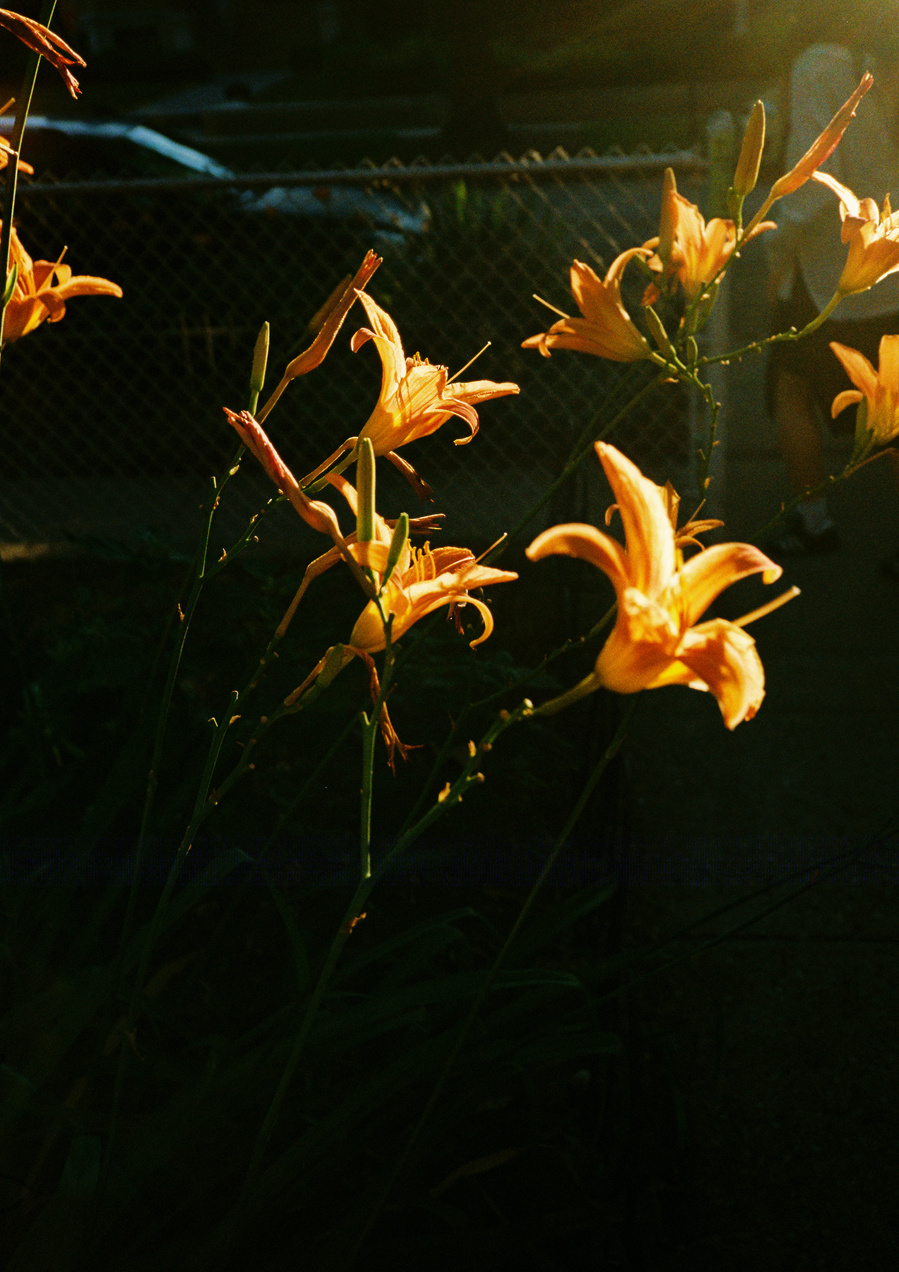
Rebecka Ohrstrom Kann: Let’s start! What drew you to photography? How did you start making photos?
James Baroz: What drew me to photography was the feeling you get when you look at a really good photograph in a book, in a museum or even off your phone. It was just an emotional response, something as simple as I wanted to stare at it longer, or I’d be away from the image and think about it more. And what better way to do that than take the photographs instead of looking for other ones, I just wanted to chase that feeling through my own images. Then I think I started photography, in middle school…my mom got an iPhone and at the time the camera was really good so I just remember after school I’d walk around the neighbourhood and take photos of mundane things like leaves or a rusted fence or something [laughs] I remember I would post it on Instagram, this was maybe 2012, and I was just posting photos of like snow or something so Tumblr like leaves falling.
ROK: How would you describe your work to someone who has never seen it?
JB: I would say it's a super personal documentary kind of style. Right now it boils down to me photographing my SO like pretty obsessively. And then also my friends and other people that I consider my chosen family. It's always been about photographing for memories, and to reflect on my young adulthood…just to like look back on because I do sometimes, and it's nice. I’ve changed how I'm photographing now from when I was 19. It's a little bit less aggressive, I’m not using as much flash as back then because at the time I was going to a lot of house shows, which I don't really do much anymore, so that's changed.
James Baroz: What drew me to photography was the feeling you get when you look at a really good photograph in a book, in a museum or even off your phone. It was just an emotional response, something as simple as I wanted to stare at it longer, or I’d be away from the image and think about it more. And what better way to do that than take the photographs instead of looking for other ones, I just wanted to chase that feeling through my own images. Then I think I started photography, in middle school…my mom got an iPhone and at the time the camera was really good so I just remember after school I’d walk around the neighbourhood and take photos of mundane things like leaves or a rusted fence or something [laughs] I remember I would post it on Instagram, this was maybe 2012, and I was just posting photos of like snow or something so Tumblr like leaves falling.
ROK: How would you describe your work to someone who has never seen it?
JB: I would say it's a super personal documentary kind of style. Right now it boils down to me photographing my SO like pretty obsessively. And then also my friends and other people that I consider my chosen family. It's always been about photographing for memories, and to reflect on my young adulthood…just to like look back on because I do sometimes, and it's nice. I’ve changed how I'm photographing now from when I was 19. It's a little bit less aggressive, I’m not using as much flash as back then because at the time I was going to a lot of house shows, which I don't really do much anymore, so that's changed.
But it's still free-spirited and open-eyed, going out there to have fun. The portrait work is one side of it which involves me looking at things and me looking at like people. But then I also make self-portraits, which form a big part of my practice.
ROK: And when did you start making self-portraits?
JB: The self-portraits I think were around my undergrad in 2019 probably. And I’m still exploring the same feelings now, I'm curious about like what my body looks like, how it's reflected and how it takes up space and me taking up space. I mostly use bathroom and bedroom mirrors, and in a lot of the self-portraits, I'm not wearing a shirt or just basic jeans or something like that just because I want to know what my body looks like. And I think it comes from childhood, memories. I was like small. I was like, you know, when you line up in class for like all the kids, I was always in the back. I was the shortest one and everything. So, I was definitely getting teased for being the smallest kid. I think that probably has something to do with it but also just looking at my body and seeing what's happening.
ROK: I’m interested in how you work with collaboration because it seems like an important aspect of your practice. Both through your project Social Music Store with Fraxiom but also since such a big part of your practice is photographing your chosen family.
![From I'll Be Home When The Tiger Lilies Bloom, James Baroz, 2022. Image courtesy of the artist.]()
![From I'll Be Home When The Tiger Lilies Bloom, James Baroz, 2022. Image courtesy of the artist.]()
![From I'll Be Home When The Tiger Lilies Bloom, James Baroz, 2022. Image courtesy of the artist.]()
JB: I photograph people and other subjects much more than my own self-portraits. I also think that the relationship between photographer and sitter has always been really interesting to me. Because I feel like that sounds so formal but what I'm doing is so informal and not traditional or in terms of techniques and everything. So yeah, collaboration is a big part even just talking with people. We haven't done anything for Social Music Store in a bit just because we're busy but when we were doing it like 2020-2021 we were living together at the time and it was just nice to work through what was happening in the world and to do something at home like screen printing and making a zine for fun.
ROK: I want to ask you about titling because I always feel like it's so hard when you work with a medium like photography that's highly visual to put it into words and find something that fits. You also use a lot of “I” and “you” when you title which invites for a first-person POV so I was interested if you could talk a little bit about your choice of titles? How does one come up with a good title and what makes for a good title in your opinion?
JB: When I think about titles, I think a lot about poetry. And using “I” and “you” makes me feel like I'm talking to like somebody who’s looking at the work or responding to something that’s happening in the image. I think it brings a full circle to the photos which are so personal because they narrate my life so using first-person pronouns just make it personal to me and then having somebody else look at it ties it in. The use “I” is universal so it also suggests a sense of togetherness. Besides that, what makes a good title? It changes. But like right now, I'm back on my Midwest emo kick. I just love those titles because they're so long and just keep going. I think they make for a good title just because they are a bit comical, but also very unique and bizarre. Also, the lyrics of those songs are so confessional and angsty which I think resonates with me because my photography is very confessional.
![From on this tiny planet show me what it takes to feel alive (close your eyes harder), James Baroz, 2022. Image courtesy of the artist.]()
![From I'll Be Home When The Tiger Lilies Bloom, James Baroz, 2022. Image courtesy of the artist.]()
ROK: You grew up in Vermont and then you moved to Chicago. Could you talk about a little bit about the things that impacted you growing up in a rural East Coast state and then moving to the Midwest, how has that shift impacted your art?
JB: When I was in Vermont, especially during the end of high school, it was just very, not lonely, but it was like a rural town and my high school was super small. I was also a very angsty teen and I was like fuck this town, like I'm over it I'm never gonna come back and then you leave and it's like how can I scrape together like 200-300 bucks to fly back home because you miss it so much. I'm grateful that I have that space to return to, but Chicago definitely changed me, and I'm glad for that, especially at the time I think I needed it. All the people here really just shaped me. I remember when I first moved here friends would take me to house shows and just being around so many bodies and the music was really inspiring and new. It was just something that I couldn't get in Vermont. But also having both of those environments, shaped me, which I'm happy for. The quiet and the rural versus the busy and noisy. I love both. I love Chicago and I love Vermont. I think both are essential to my art-making and practice.
ROK: I know that you make a lot of landscapes when you're home and I love how you pair bodies and environments in a really unique way. What are ways in which you think about identity as moving beyond the body?
JB: I think I resonate with the idea that you can find identity within places, landscapes, and environments. Certainly, a home or a childhood home. Just the idea of taking bits and pieces wherever you go, even if it's not home, just being at the lake or something or being by yourself at a creek and taking it in and taking that with you. The idea of landscapes and bodies was really essential to the last book I did, I'll Be Home When The Tiger Lilies Bloom. Just collecting all those memories and then pouring them into a desire to define your identity between places and relationships.
ROK: Or even your non-natural landscapes. Like a bar or an apartment window. You have so many landscapes that aren't necessarily of nature.
JB: Yeah, even just domestic still life and human traces, A bar that has a couple of shots on the table or the window one with the heart. Bodies in landscapes, that idea.
![From I'll Be Home When The Tiger Lilies Bloom, James Baroz, 2022. Image courtesy of the artist.]()
![From I'll Be Home When The Tiger Lilies Bloom, James Baroz, 2022. Image courtesy of the artist.]()
ROK: Many of your projects take the shape of zines. What is it about bookmaking that you're interested in?
JB: Bookmaking and zines are very important to what I do. I like how it takes shape as a narrative and being able to fit so much or little into it and mess around with sequences to change the narrative. It's just fun to do something after you've made the photo and bring it back to life or even looking back on slightly older work and taking it back. Just not being done with the photograph because it still holds so much weight. Bookmaking allows me to do a lot for what I want to say and zines are also accessible to me and it's a way I can get what I'm doing out there.
ROK: Photography is such a fluid medium and I think that's something that's definitely seen in how you rework and reuse photographs and how they transform in different company.
JB: The photos speak to each other.
ROK: Surfaces in transition such as skin, marks, tattoos, and mirrors often figure in your work. What is it about surfaces you find compelling in relationship to identity in flux?
JB: Yeah, with tattoos, I just think, well, first, if I wasn't a photographer I'd probably put all my time and effort into tattoos and do them more properly. Most of the ones that I make are for my friends just for the enjoyment of it
ROK: I remember, one of your friends taught you too, right? So you really invested yourself.
JB: Yeah! I was just having one of my friends teach me some stuff on some fake skin. I think it's really cool to be able to receive and give tattoos. Then as far as the relationship with that and
ROK: And when did you start making self-portraits?
JB: The self-portraits I think were around my undergrad in 2019 probably. And I’m still exploring the same feelings now, I'm curious about like what my body looks like, how it's reflected and how it takes up space and me taking up space. I mostly use bathroom and bedroom mirrors, and in a lot of the self-portraits, I'm not wearing a shirt or just basic jeans or something like that just because I want to know what my body looks like. And I think it comes from childhood, memories. I was like small. I was like, you know, when you line up in class for like all the kids, I was always in the back. I was the shortest one and everything. So, I was definitely getting teased for being the smallest kid. I think that probably has something to do with it but also just looking at my body and seeing what's happening.
ROK: I’m interested in how you work with collaboration because it seems like an important aspect of your practice. Both through your project Social Music Store with Fraxiom but also since such a big part of your practice is photographing your chosen family.
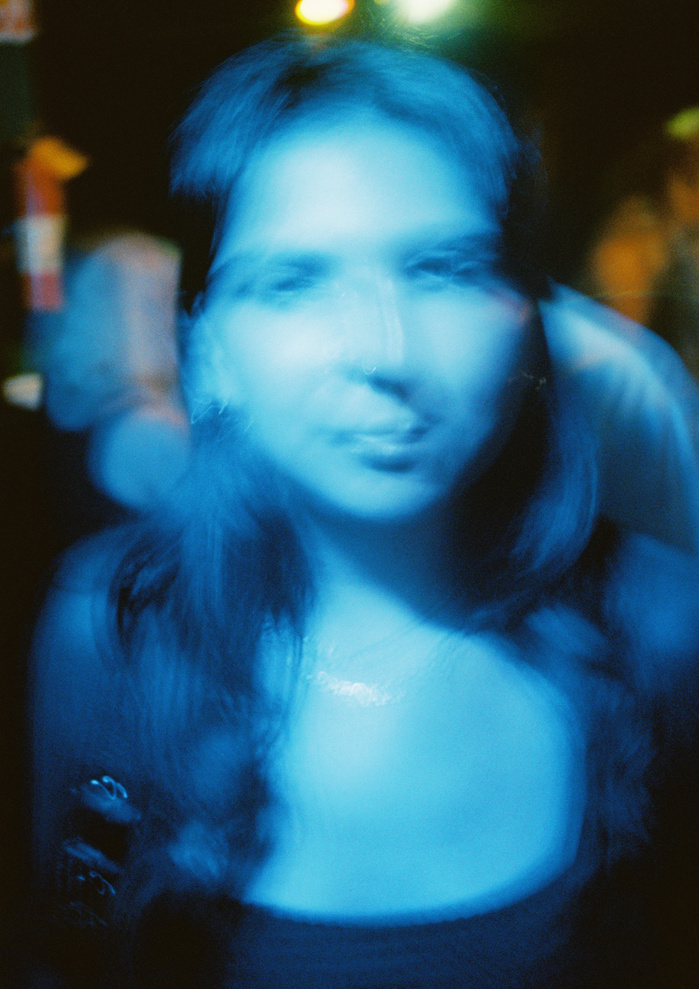


JB: I photograph people and other subjects much more than my own self-portraits. I also think that the relationship between photographer and sitter has always been really interesting to me. Because I feel like that sounds so formal but what I'm doing is so informal and not traditional or in terms of techniques and everything. So yeah, collaboration is a big part even just talking with people. We haven't done anything for Social Music Store in a bit just because we're busy but when we were doing it like 2020-2021 we were living together at the time and it was just nice to work through what was happening in the world and to do something at home like screen printing and making a zine for fun.
ROK: I want to ask you about titling because I always feel like it's so hard when you work with a medium like photography that's highly visual to put it into words and find something that fits. You also use a lot of “I” and “you” when you title which invites for a first-person POV so I was interested if you could talk a little bit about your choice of titles? How does one come up with a good title and what makes for a good title in your opinion?
JB: When I think about titles, I think a lot about poetry. And using “I” and “you” makes me feel like I'm talking to like somebody who’s looking at the work or responding to something that’s happening in the image. I think it brings a full circle to the photos which are so personal because they narrate my life so using first-person pronouns just make it personal to me and then having somebody else look at it ties it in. The use “I” is universal so it also suggests a sense of togetherness. Besides that, what makes a good title? It changes. But like right now, I'm back on my Midwest emo kick. I just love those titles because they're so long and just keep going. I think they make for a good title just because they are a bit comical, but also very unique and bizarre. Also, the lyrics of those songs are so confessional and angsty which I think resonates with me because my photography is very confessional.

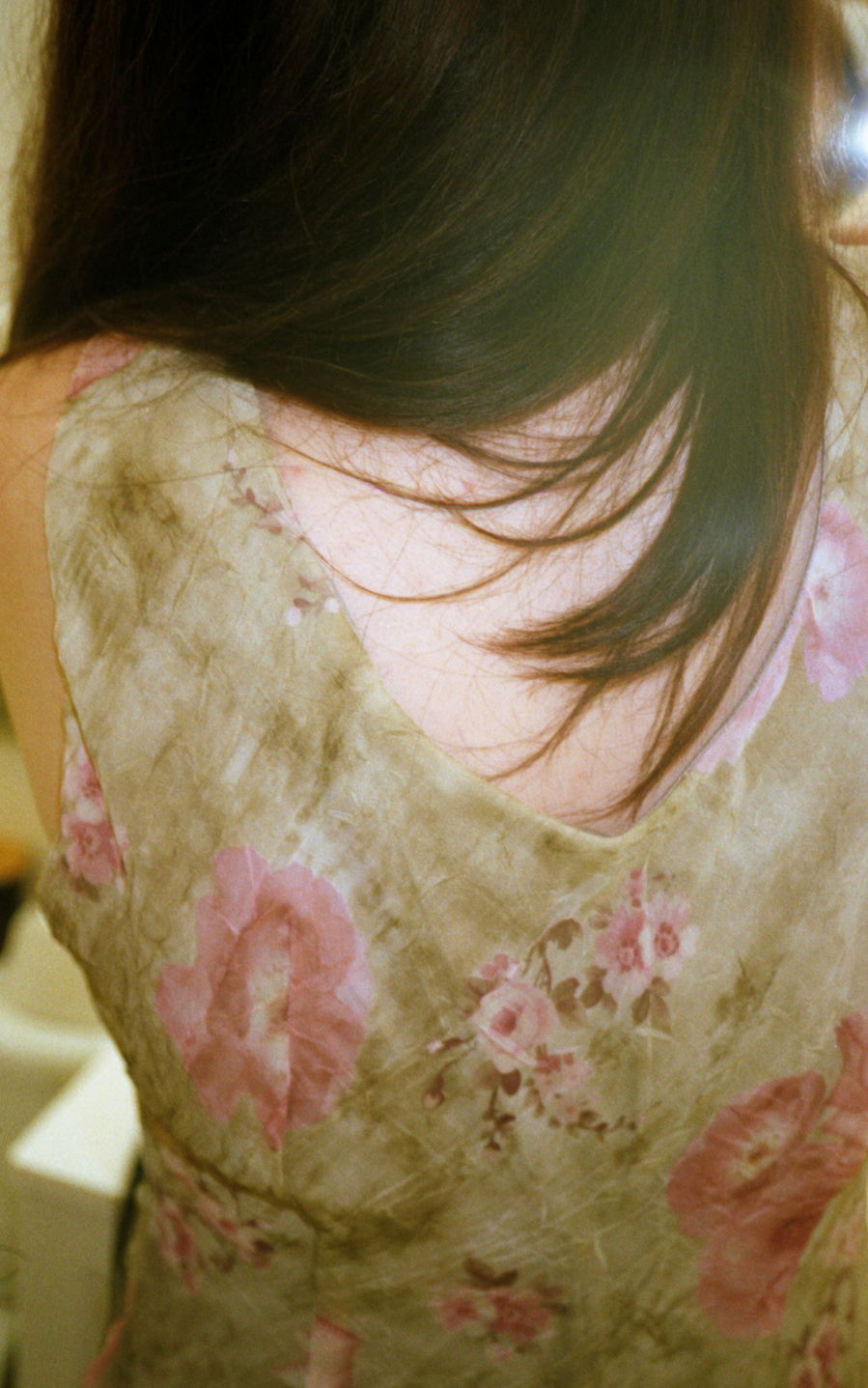
ROK: You grew up in Vermont and then you moved to Chicago. Could you talk about a little bit about the things that impacted you growing up in a rural East Coast state and then moving to the Midwest, how has that shift impacted your art?
JB: When I was in Vermont, especially during the end of high school, it was just very, not lonely, but it was like a rural town and my high school was super small. I was also a very angsty teen and I was like fuck this town, like I'm over it I'm never gonna come back and then you leave and it's like how can I scrape together like 200-300 bucks to fly back home because you miss it so much. I'm grateful that I have that space to return to, but Chicago definitely changed me, and I'm glad for that, especially at the time I think I needed it. All the people here really just shaped me. I remember when I first moved here friends would take me to house shows and just being around so many bodies and the music was really inspiring and new. It was just something that I couldn't get in Vermont. But also having both of those environments, shaped me, which I'm happy for. The quiet and the rural versus the busy and noisy. I love both. I love Chicago and I love Vermont. I think both are essential to my art-making and practice.
ROK: I know that you make a lot of landscapes when you're home and I love how you pair bodies and environments in a really unique way. What are ways in which you think about identity as moving beyond the body?
JB: I think I resonate with the idea that you can find identity within places, landscapes, and environments. Certainly, a home or a childhood home. Just the idea of taking bits and pieces wherever you go, even if it's not home, just being at the lake or something or being by yourself at a creek and taking it in and taking that with you. The idea of landscapes and bodies was really essential to the last book I did, I'll Be Home When The Tiger Lilies Bloom. Just collecting all those memories and then pouring them into a desire to define your identity between places and relationships.
ROK: Or even your non-natural landscapes. Like a bar or an apartment window. You have so many landscapes that aren't necessarily of nature.
JB: Yeah, even just domestic still life and human traces, A bar that has a couple of shots on the table or the window one with the heart. Bodies in landscapes, that idea.
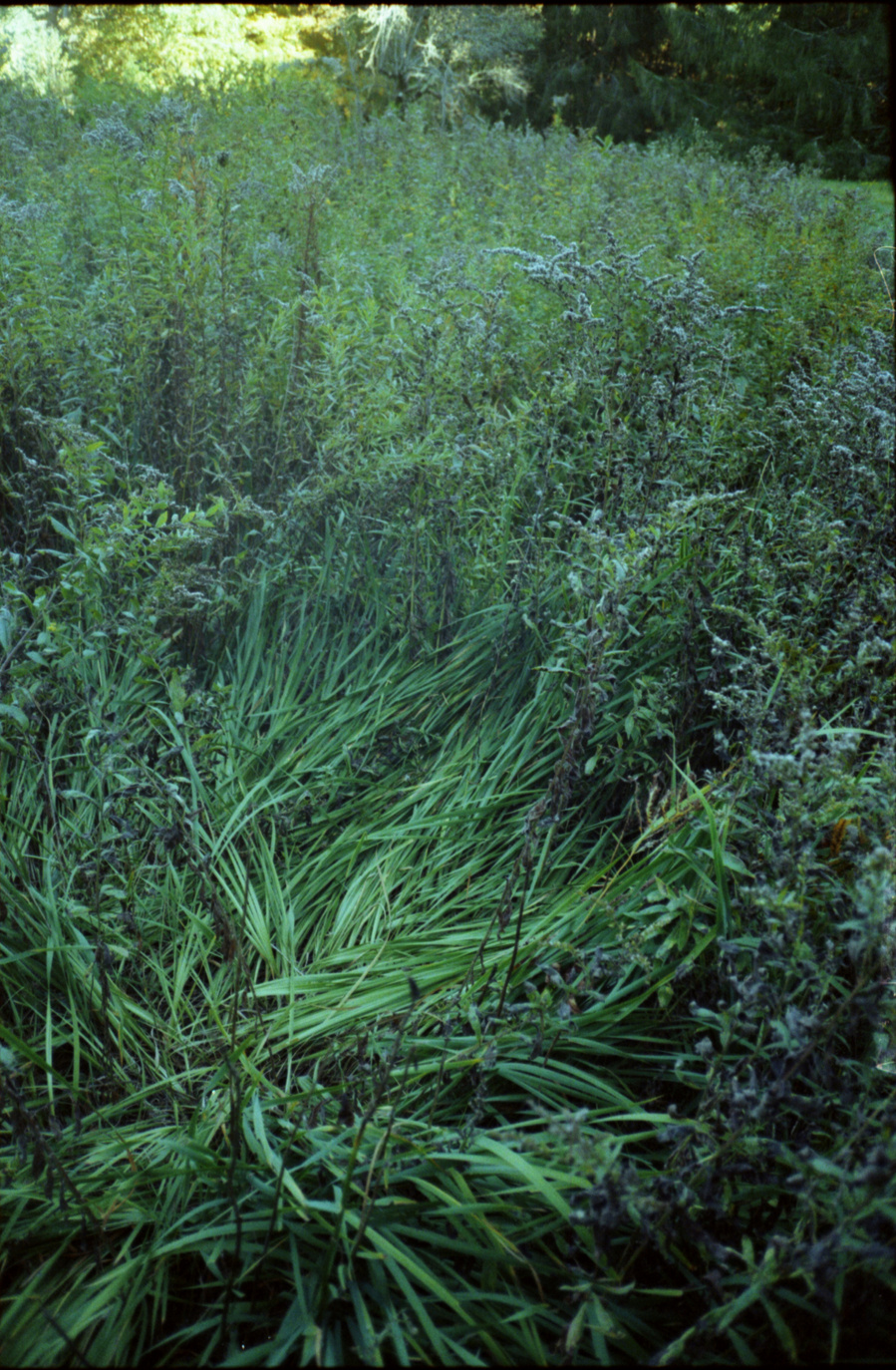
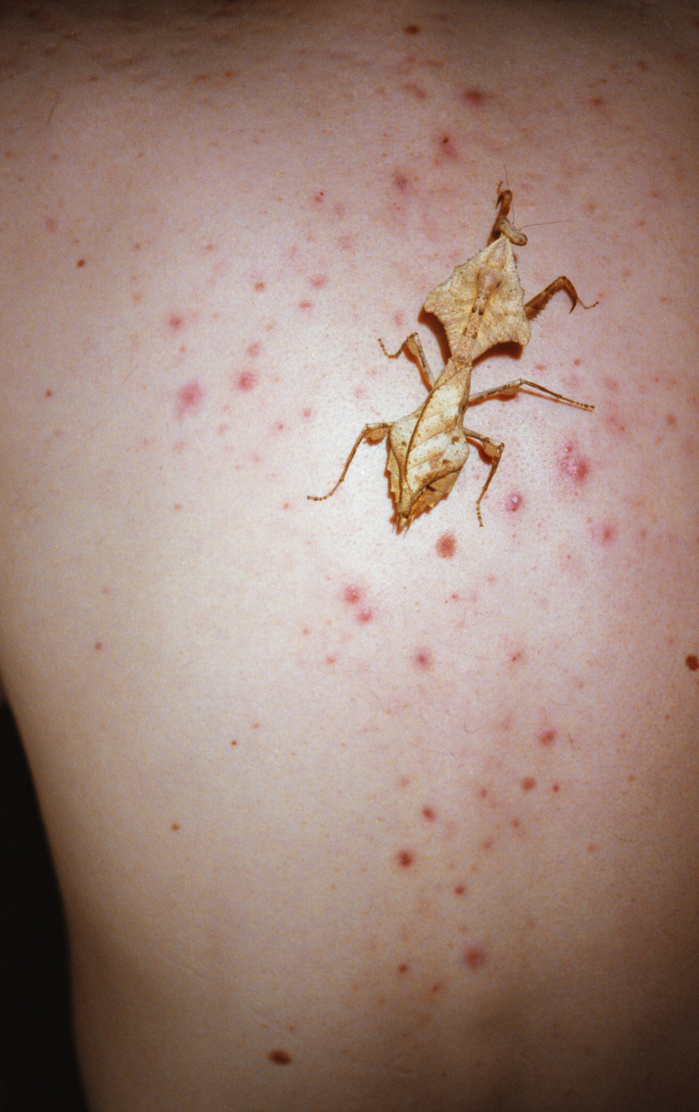
ROK: Many of your projects take the shape of zines. What is it about bookmaking that you're interested in?
JB: Bookmaking and zines are very important to what I do. I like how it takes shape as a narrative and being able to fit so much or little into it and mess around with sequences to change the narrative. It's just fun to do something after you've made the photo and bring it back to life or even looking back on slightly older work and taking it back. Just not being done with the photograph because it still holds so much weight. Bookmaking allows me to do a lot for what I want to say and zines are also accessible to me and it's a way I can get what I'm doing out there.
ROK: Photography is such a fluid medium and I think that's something that's definitely seen in how you rework and reuse photographs and how they transform in different company.
JB: The photos speak to each other.
ROK: Surfaces in transition such as skin, marks, tattoos, and mirrors often figure in your work. What is it about surfaces you find compelling in relationship to identity in flux?
JB: Yeah, with tattoos, I just think, well, first, if I wasn't a photographer I'd probably put all my time and effort into tattoos and do them more properly. Most of the ones that I make are for my friends just for the enjoyment of it
ROK: I remember, one of your friends taught you too, right? So you really invested yourself.
JB: Yeah! I was just having one of my friends teach me some stuff on some fake skin. I think it's really cool to be able to receive and give tattoos. Then as far as the relationship with that and
identity, in flux, I just think tattoos are super empowering. Being able to say, I'm going to mark my skin now permanently forever, and being okay with that for good or worse, because there are bad tattoos out there…but I think all tattoos are nice. It's storytelling, just like photography. It's going to be there for awhile and it becomes a part of who you are. I think getting tattoos is like a pretty brave thing because not everybody has them. But some people do. A lot of people around me do. But I still think it's like a pretty brave thing to do, to get, cause I mean, you sit there for hours sometimes. You have to endure a lot to get a piece of art, essentially, And it hurts. It's really tiring, you feel drained.
![From No One Will Dance, James Baroz, 2019. Image courtesy of the artist.]()
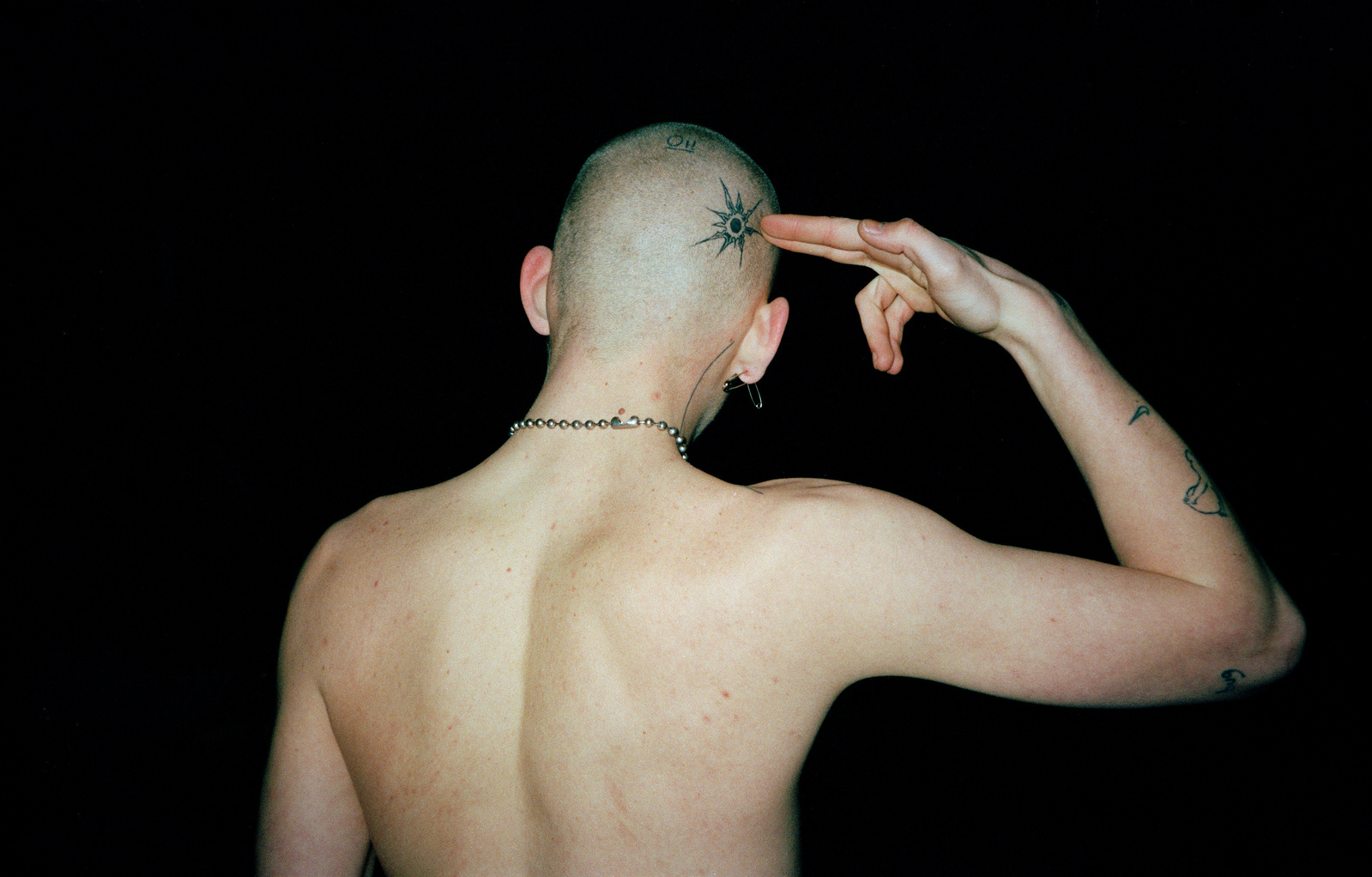
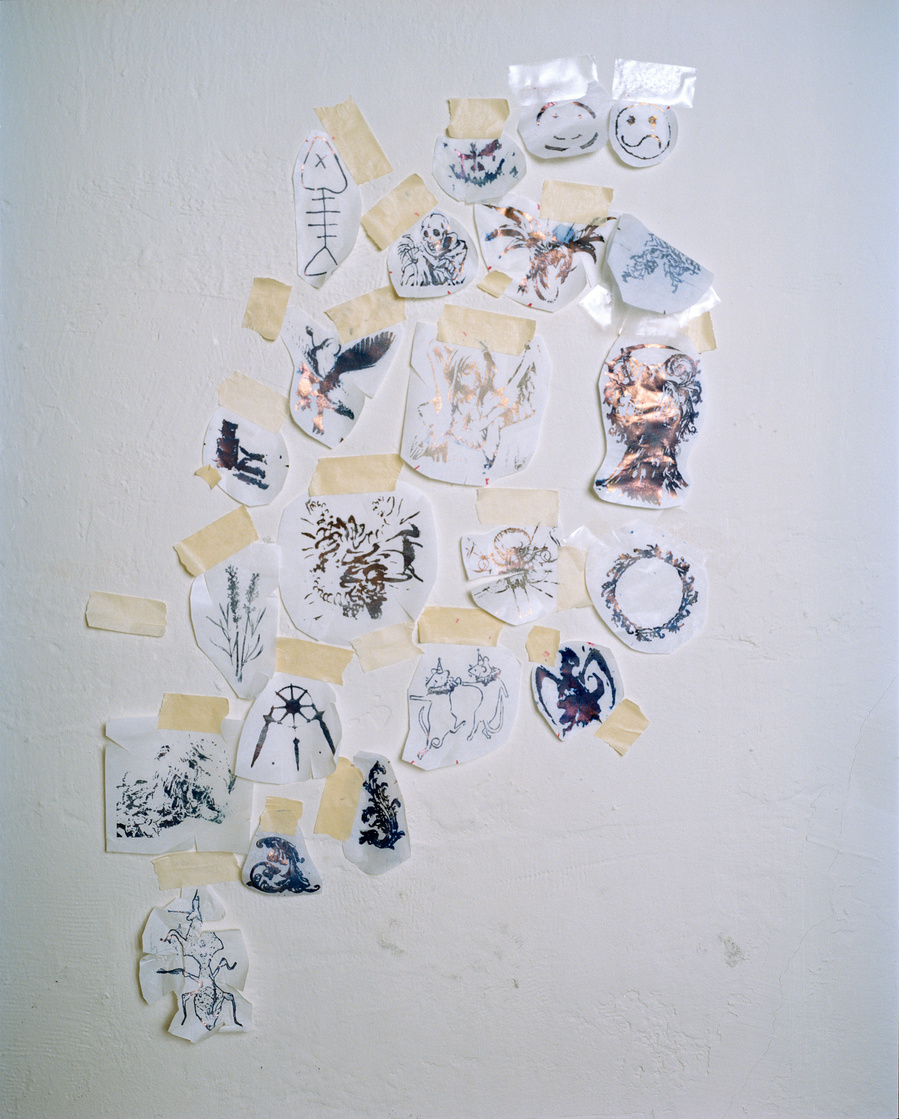
ROK: What are some of the artists that have influenced you early on, and what was it about their work that you liked or were impacted by specifically?
JB: Nan Goldin, obviously. I feel like I had to bring her up [laughs] But Nan Goldin and Ren Hang are definitely big names to me. They came to mind firstly because they're both using point-of-shoot cameras and excessive flash, which was what I was seeing online and in books being 19 years old when I wanted to really start using film and go past digital to make my work more tangible. I was seeing their work and it just seemed accessible. I was already running around the city, so I thought, why not make my own images that feel thrilling and energetic. Their images are charged, there’s an energy. It’s really timeless. Not that I was going out at 19 like she was making timeless work, [laughs] but to me, it was the same process. At the core, I had a desire to photograph friends and memories. I liked their subjects, that they were doing was something that I already resonated with, but that inspiration brought me along. It just was a driving mechanism to do something on my own.
ROK: Could talk a little bit about your new project on this tiny planet show me what it takes to feel alive (close your eyes harder)?
JB: Nan Goldin, obviously. I feel like I had to bring her up [laughs] But Nan Goldin and Ren Hang are definitely big names to me. They came to mind firstly because they're both using point-of-shoot cameras and excessive flash, which was what I was seeing online and in books being 19 years old when I wanted to really start using film and go past digital to make my work more tangible. I was seeing their work and it just seemed accessible. I was already running around the city, so I thought, why not make my own images that feel thrilling and energetic. Their images are charged, there’s an energy. It’s really timeless. Not that I was going out at 19 like she was making timeless work, [laughs] but to me, it was the same process. At the core, I had a desire to photograph friends and memories. I liked their subjects, that they were doing was something that I already resonated with, but that inspiration brought me along. It just was a driving mechanism to do something on my own.
ROK: Could talk a little bit about your new project on this tiny planet show me what it takes to feel alive (close your eyes harder)?
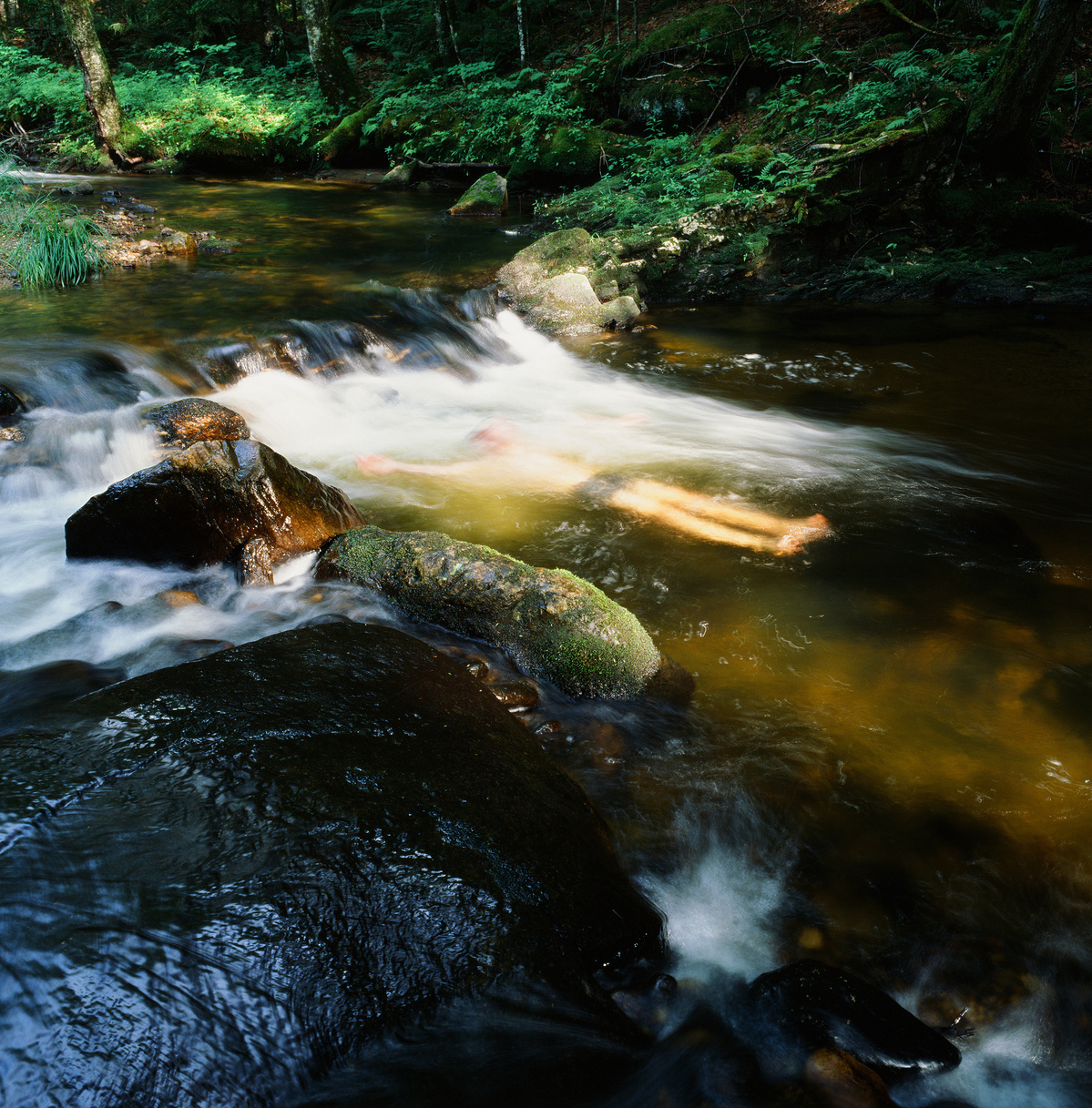
JB: Yeah, for that title and the zine that I'm working on now, it's really about how I'm feeling right now. I'm just being really tired and exhausted of the everyday or just wanting more out of life, but only being 23. Wanting more out of life so much that you don't need your eyes open to experience something like euphoric or life-changing and to be alive and going after that feeling. I'm just tired of waiting around for things to happen.Then I also wanted to work in the idea of having your eyes closed within photography and photographing. Just going back to why I started photographing more seriously because of that euphoric feeling and how a photograph can be so moving. That idea, how can I feel if my eyes were closed? How can I translate that feeling or atmosphere in an image the same way I want to with my eyes closed? Even through music or the breeze hits you or how the ocean smells like salt. But also you can't experience that every day. That is not the world we live in. So it's like that bright idea to feel more alive and close my eyes and rest.
ROK: Yeah, tactility is definitely something I think about when I see your photos as well, like how they're so... I don't know, I really get a feeling when I look at every photograph, it’s a very immediate experience.…I also love the title and how it speaks to longing and the physical sensation of seeing an image.
ROK: Yeah, tactility is definitely something I think about when I see your photos as well, like how they're so... I don't know, I really get a feeling when I look at every photograph, it’s a very immediate experience.…I also love the title and how it speaks to longing and the physical sensation of seeing an image.
R: Before we talked a little bit about how you translate photographs into different mediums. What's your approach to art making and where do you find inspiration?
JB: Yeah, I want to bring up the music again, especially right now I'm just finding a lot of motivation and inspiration within music. I’m getting back into that Midwest emo kick, which comes and goes. The whiny vocals and the angst and confessional lyrics are really moving and emotive. Trying to bring back that feeling in photographs. I think I'm a really responsive artist to being out in the world and how I'm talking to others and how others would talk to me and those memories and just bring that back into an image, I guess.
![From I'll Be Home When The Tiger Lilies Bloom, James Baroz, 2022. Image courtesy of the artist.]()
ROK: I would like to hear how you navigate collaboration in different projects such as working long-term with Fraxiom and Social Music Store, but also freelancing and working on personal projects.
JB: I think being able to work with others is really important to what I'm doing with Social Music Store and with freelancing projects and even when I do my own work because I’m collaborating with the many other individuals that I'm photographing and It's important to me that we share the same values and put the same energy and philosophy out there. It'd be different if I was a landscape photographer, I feel like I would be collaborating differently. But because I'm working so closely with my friends, people I consider family. It's just important. It's very personal in a way.
ROK: What's one piece of advice that someone has given you that you've found to be true?
JB: I think it would probably be from my undergrad, from Lisa [Lisa Lindvay] for sure. I remember one time after class, I was asking her something about my work, and she was telling me about how when she was getting her master's degree they would do these weeklong critiques and everything. She had a photograph of one of her brothers, I think laying on a bed and it was a little bit out of focus or he moved a little bit. There was a little slight blur because she was using a lot of dim light and she had to really stand her ground because they were giving her comments like “oh, it's not in focus”, or “he's moving right here or something.” She had to stand her ground and be like, “people move. It's very human.” It's true and honest. I just think about that sometimes, really sticking to what you believe in. If you care so deeply about what you're photographing, then you have to speak it too. Because it's a critique, they're trying to get you to back it up. But even outside of that, because people are always just going to criticize or say something about an image, but if you care about it, then what else matters?
JB: Yeah, I want to bring up the music again, especially right now I'm just finding a lot of motivation and inspiration within music. I’m getting back into that Midwest emo kick, which comes and goes. The whiny vocals and the angst and confessional lyrics are really moving and emotive. Trying to bring back that feeling in photographs. I think I'm a really responsive artist to being out in the world and how I'm talking to others and how others would talk to me and those memories and just bring that back into an image, I guess.
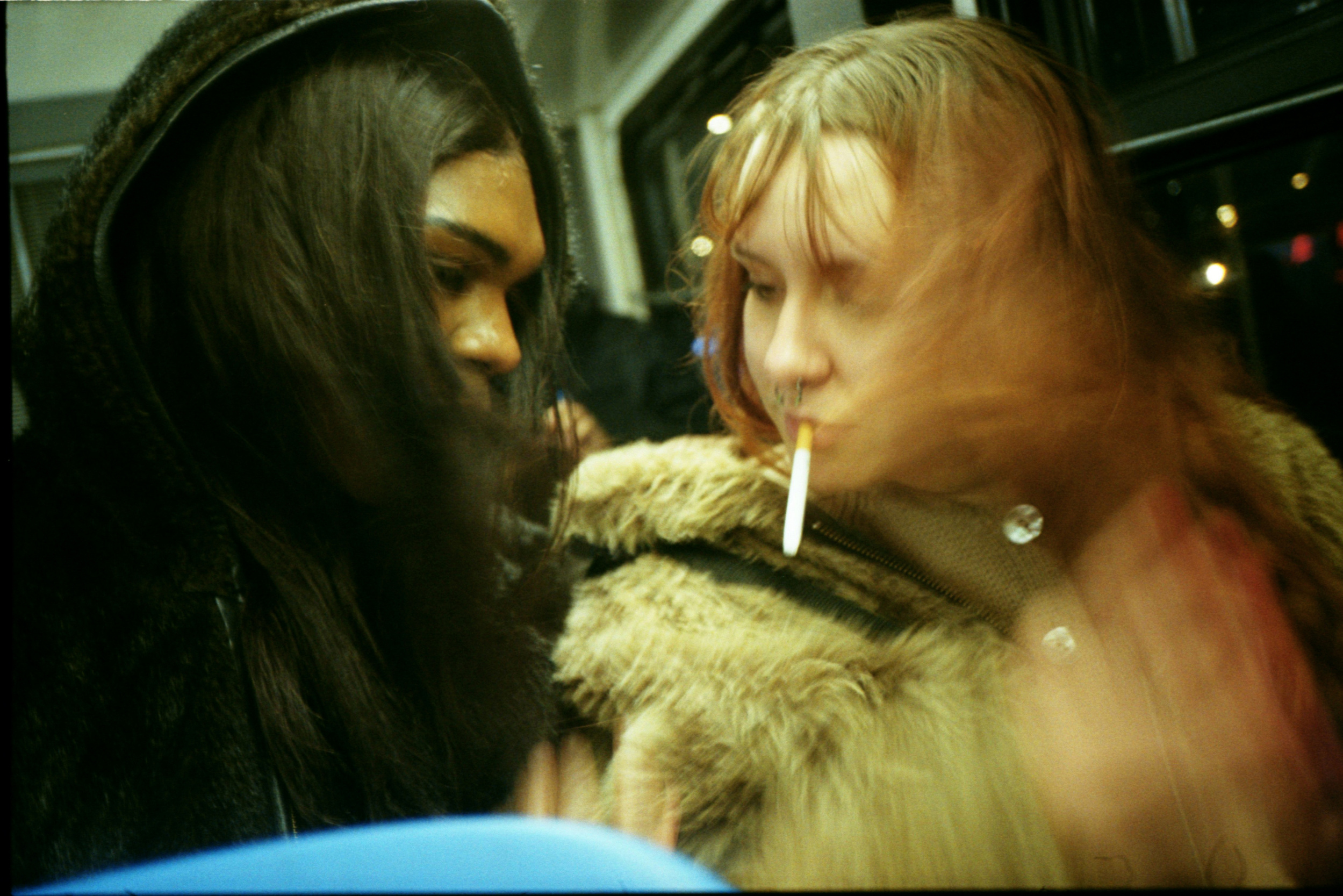
ROK: I would like to hear how you navigate collaboration in different projects such as working long-term with Fraxiom and Social Music Store, but also freelancing and working on personal projects.
JB: I think being able to work with others is really important to what I'm doing with Social Music Store and with freelancing projects and even when I do my own work because I’m collaborating with the many other individuals that I'm photographing and It's important to me that we share the same values and put the same energy and philosophy out there. It'd be different if I was a landscape photographer, I feel like I would be collaborating differently. But because I'm working so closely with my friends, people I consider family. It's just important. It's very personal in a way.
ROK: What's one piece of advice that someone has given you that you've found to be true?
JB: I think it would probably be from my undergrad, from Lisa [Lisa Lindvay] for sure. I remember one time after class, I was asking her something about my work, and she was telling me about how when she was getting her master's degree they would do these weeklong critiques and everything. She had a photograph of one of her brothers, I think laying on a bed and it was a little bit out of focus or he moved a little bit. There was a little slight blur because she was using a lot of dim light and she had to really stand her ground because they were giving her comments like “oh, it's not in focus”, or “he's moving right here or something.” She had to stand her ground and be like, “people move. It's very human.” It's true and honest. I just think about that sometimes, really sticking to what you believe in. If you care so deeply about what you're photographing, then you have to speak it too. Because it's a critique, they're trying to get you to back it up. But even outside of that, because people are always just going to criticize or say something about an image, but if you care about it, then what else matters?